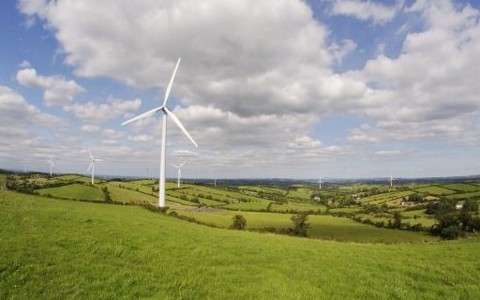The Myth of Natural Gas and Other Fossil Fuels: We think we need them but we really don’t, and recent studies dispel the myth
A recent report from the United States shows that New York State can produce all its energy needs from renewable sources without any natural gas, from fracking or conventional methods, or from any other fossil fuels. The renewable sources are wind, water and sunlight. The researchers, in Energy Policy, calculate that energy for electricity, transportation, heating/cooling, and industry can be produced by: 10% from onshore wind; 40% from offshore wind; 20% from solar power plants; 18% from solar panels on rooftops; and a small amount of geothermal, hydroelectric, tidal (1%) and wave (0.5%).
This conversion to renewable energy could happen by 2030, in only 17 years, and it would reduce New York State’s end-use power by about 37% and fuel costs would be zero. It would also save about 4,000 deaths each year.
Irish Wind Energy Association
The report proceeds to demonstrate how the conversion to renewables can be done. Along the way, the authors explain which energy technologies they selected for this conversion, and which they excluded. Natural gas was excluded for several reasons. Note 1.
Proponents of natural gas, including supporters of fracking, have argued that natural gas can serve as a “bridge fuel” between reliance on coal and development of renewable energy sources on the grounds that natural gas causes less global warming per unit of electric power than coal. The researchers reject this notion as unfounded.
First, when they compared the greenhouse gas (GHG) footprint of natural gas with wind, water and sunlight over a 10-30 year period, they found that natural gas produces greater global warming and is a danger to Arctic sea ice because of the leaked methane and black carbon emissions. Moreover, when they examined the mining, transport and use of conventional natural gas for electric power alone, they found that it results in 60-80 times more carbon-equivalent emissions and air pollution mortality per unit of electric power generated than wind energy over a 100-year time frame. They also determined that natural gas from unconventional resources, as in fracking for shale gas, has larger methane emissions and greater GHG footprint than gas from conventional sources, and is therefore even more problematical for GHG emissions.
Second, they compared natural gas with coal as sources for electric power. They found that natural gas does emit less carbon dioxide (CO2) per unit of electric power than coal, but when methane emissions and sulfur dioxide (SO2), both strong GHGs, are included in the analysis then natural gas increases global warming more than coal. As pointed out above, the natural gas from fracking has an even higher GHG footprint than conventional gas.
The study also found that when used as a transportation fuel, natural gas has greater global warming potential than oil because of the CO2 footprint and the methane emissions from natural gas in the venting of fuel tanks and losses during refueling.
There likely will be some attacks on the study by fossil fuel interests on the grounds that several of the authors (Anthony R. Ingraffea and Robert W. Howarth) have been highly and publically critical of fracking, and the authors took “suggestions and comments” from Mark A. Ruffalo and Josh Fox, also well-known opponents of fracking. But the authors note that the study was not funded by any interest group or government agency. Also of importance is the fact that two of the authors, Jacobson and Delucchi, have published other peer-reviewed studies demonstrating the same conclusion — that renewables can replace fossil fuels for all energy needs — as applied to the US and to the world. See, e.g., Jacobson and Delucchi (2011). Thus, the current study is simply an application of their basic premise to the conditions in New York State.
Moreover, another new study from researchers (Budischak et al.) in the US and Denmark shows that the US could be powered almost entirely with renewable energy by 2030 at a cost comparable to current dirty power. The authors propose that one way to offset the variable power from renewables is by over-building the supply.
Note 1 In another article by two of the authors, they also explain why nuclear power and coal with carbon capture are also excluded as power sources. See below, Jacobson and Delucchi (2011).
Sources
Jacobson, M.Z., et al., “Examining the feasibility of converting New York State’s all-purpose energy infrastructure to one using wind, water, and sunlight,” Energy Policy (2013) www.sciencedirect.com/science/article/pii/S0301421513001213 See corrected version.
Cory Budischak, DeAnna Sewell, Heather Thomson, Leon Mach, Dana E. Veron, Willett Kempton, “Cost-minimized combinations of wind power, solar power and electrochemical storage, powering the grid up to 99.9% of the time,” Journal of Power Studies, Vol. 225 (1 March 2013), at 60-74. www.sciencedirect.com/science/article/pii/S0378775312014759
Jacobson, M.Z. and Delucchi, Mark A., “Providing all global energy with wind, water, and solar power, Part I: Technologies, energy resources, quantities and areas of infrastructure, and materials,” Energy Policy (2011). www.sciencedirect.com/science/article/pii/S0301421510008645



No comments yet, add your own below